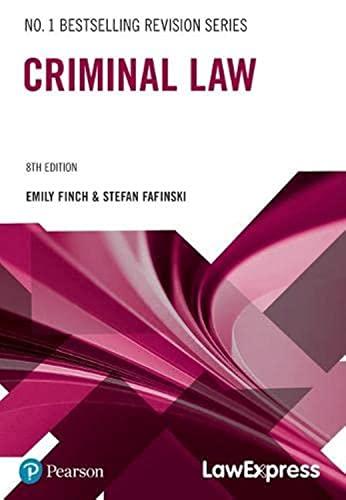Question
Link: https:/.eu/regional_policy/sources/docgener/evaluation/library/united_kingdom/0611_uk_business_link_eval_en.pdf 1. Our company (A) is going to buy another company (B). We want to value the shares of B and, therefore, we will
Link: https:/.eu/regional_policy/sources/docgener/evaluation/library/united_kingdom/0611_uk_business_link_eval_en.pdf
1. Our company (A) is going to buy another company (B). We want to value the shares of
B and, therefore, we will use three alternatives of the structure Debt/Shareholders'
Equity so as to obtain the WACC: 1) present structure of A; 2) present structure of B,
2) structure used by A to finance the acquisition of B's shares. We will value the
company B by applying these three alternatives and then take as a reference the
average of the results. Is this correct?
3. When valuing the shares of my company, I calculate the present value of the expected
cash flows to shareholders and I add to the result obtained cash holdings and liquid
investments. Is that correct?
4. I think the Free Cash Flow (FCF) can be obtained from the Equity Cash Flow (CFac) by
using the relation: FCF = CFac + Interests - D. Is this true?
5. Is the relation between capitalization and book value of shares a good guide to
investments?
6. As my company is not listed, the investment banks apply an illiquidity premium.
Actually, they say it is an illiquidity premium but then they call it a small cap premium.
One of the banks, apparently based on Titman y Martin (2007), added the following
small cap premiums: "0.91% if the capitalization is situated between $1,167 and $4,794
million; 1.70% if the capitalization is between $331 and $1,167 million; 4.01% if it is
lower than $331 million". Another bank adds 2% because historically the return of small
companies was smaller than that of big companies. Which one is more appropriate?
7. Which taxes do I have to use when calculating the Free Cash Flow (FCF) - is it the
marginal tax rate or the medium tax rate of the leveraged company?
9. According to what I read in a book, market efficiency hypothesis implies that the
expected average value of variations in the shares price is zero. Therefore, the best
estimate of the future price of a share is its price today, as it incorporates all the
available information. Is that right?
10. An investment bank calculated my WACC. The report says: "the definition of the
WACC is WACC = RF + u (RM - RF); RF being the risk-free rate, u the unleveraged
beta and RM the market risk rate." This is different from what we have seen in our
class. Are they right?
Step by Step Solution
There are 3 Steps involved in it
Step: 1

Get Instant Access to Expert-Tailored Solutions
See step-by-step solutions with expert insights and AI powered tools for academic success
Step: 2

Step: 3

Ace Your Homework with AI
Get the answers you need in no time with our AI-driven, step-by-step assistance
Get Started


